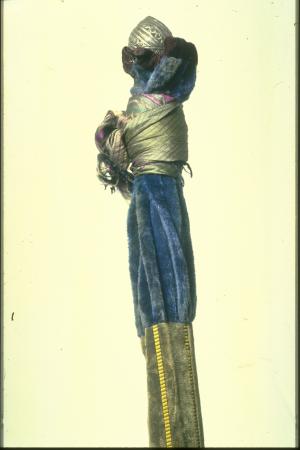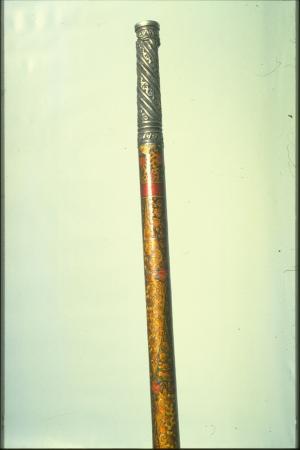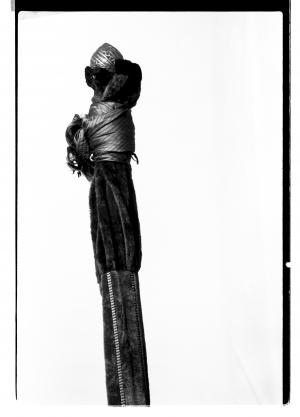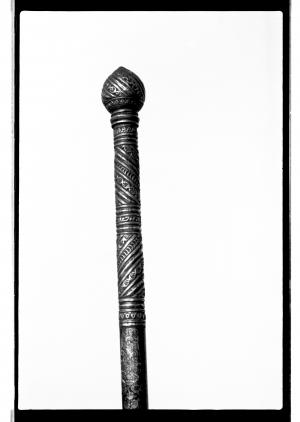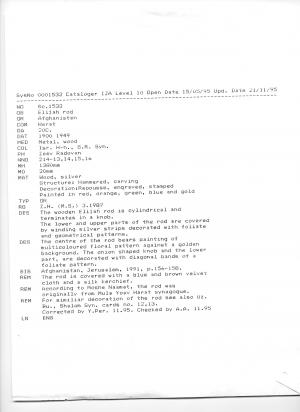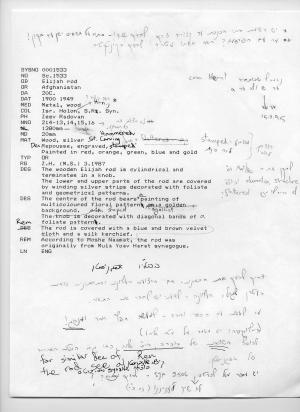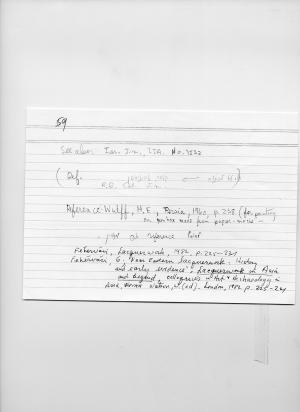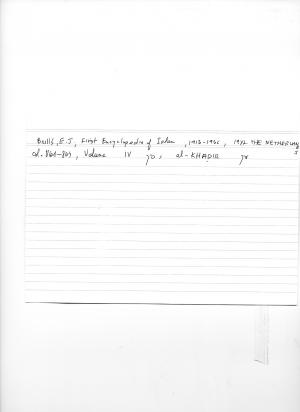Obj. ID: 3898
Sacred and Ritual Objects Elijah's rod, Afghanistan, 1949
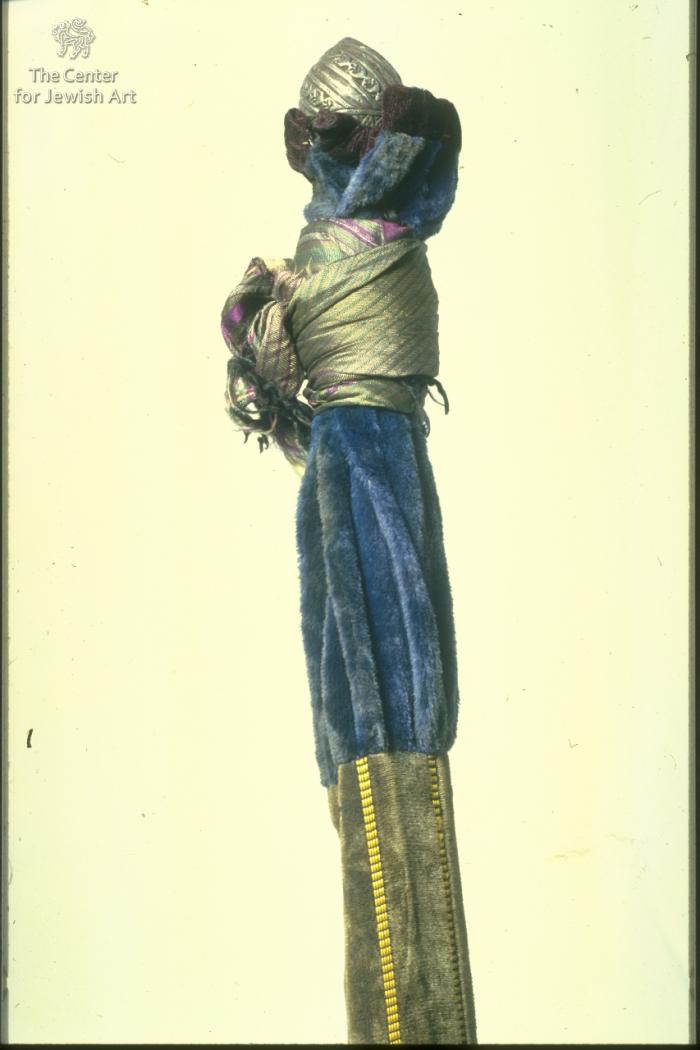
The Elijah's rod terminates in a silver knob. The lower and upper parts of the rod are covered by winding silver strips decorated with foliate and geometric patterns. The center of the rod is painted with a multi-colored floral pattern on a gold background. The lower section of the rod and the onion-shaped knob are decorated with diagonal bands with a foliate pattern.
The rod is wrapped with a blue and brown velvet cloth and a silk kerchief.
sub-set tree:
In the Persian Jewish communities of Central Asia, Afghanistan and Caucasus, the arrival of Elijah at the circumcision is also marked by a special staff, attributed to the old messenger, named "Elijah's rod". Jewish folktales of Afghanistan describe Elijah the prophet as an old man worn out from the many circumcisions he must attend. He therefore leans on his rod and sits on his chair in order to rest a little.
In Afghan communities, Elijah's staff was preserved, wrapped in a cloth sack, in the Torah ark. During the circumcision ceremony, it was set between the two chairs, tilted against the big Elijah's chair.
As the rod is believed to have healing powers, associated with the revival stories of the prophet Elijah (1 Kgs. 17: 21-24) and his disciple (2 Kgs. 4: 29), the rod is brought to the house of a birthing woman, in order to protect her and the newborn [Noy, Afghanistan: Folklore; Kurt, Matehu; Hanegbi, The Circumcision; Amar, Ingathering, p. 97].
Apart from the custom, the staffs of the three communities share common artistic features. The rod is usually covered with silver sheets and is surrounded by an inscribed band. However, the ornaments differ in style and shape and the decoration of the knob.
The rod was originally from the Mula Yoav Harat Synagogue in Afghanistan, according to Mr. Moshe Na'amat, a congregant.
Hanegbi, Zohar and Bracha Yaniv, Afghanistan : the synagogue and the Jewish home (Jerusalem: Center for Jewish Art, 1991), pp. 34, 82, 156-158.
Amar, Ariella and Ruth Jacoby, eds. Ingathering of the Nations. Jerusalem: Center for Jewish Art, The Hebrew University of Jerusalem, 1998. In English and Hebrew.
Kurt, Zevulun. "Matehu shel Eliyahu Ha-Navi" (Elijah's Rod). Yeda Am. Vol. 7. No. 25. P. 64. 1962. In Hebrew.
Noy, Dov. s.v. "Afghanistan: Folklore". Encyclopedia Judaica, 2nd ed.


